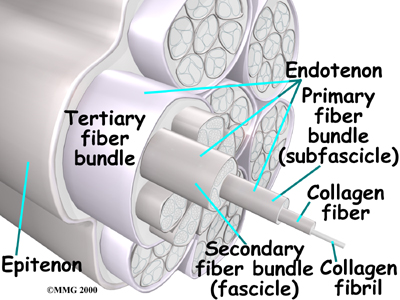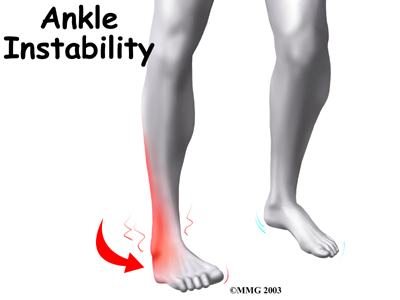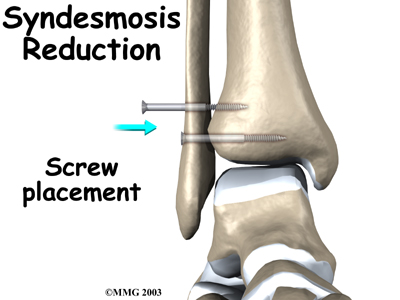Non-surgical Rehabilitation
Even if you don't require surgery, you may need to follow a program of rehabilitation exercises. Our physical therapists at STAR Physical Therapy can create a program to help you regain ankle function. It is very important to improve strength and coordination in the ankle. An ankle syndesmosis injury is more complex than a simple ankle sprain. The healing time can be more than twice as long, and getting back to normal activity is usually a more gradual process.
Mild Syndesmosis Sprains
Mild syndesmosis sprains are treated much like a regular ankle sprain. Treatment includes mild pain medications and anti-inflammatory medicine such as ibuprofin. Patients rest the ankle for a short time to reduce swelling and pain. Unlike a regular ankle sprain, our physical therapist much more likely to recommend using crutches to keep weight off the foot for several weeks if a syndesmosis sprain is suspected.
Our physical therapist will recommend treatments of ice and compression (such as an elastic wrap) to help alleviate swelling and encourage a faster return of normal ankle movement. An ankle brace is typically worn during the rehabilitation period.
As the ankle heals, patients progress to normal walking. Your STAR Physical Therapy physical therapist will start you on a series of exercises to strengthen the outer ankle muscles and to maximize balance.
Related Article: STAR Physical Therapy's Guide to Ankle Sprain and Instability
Moderate Syndesmosis Sprains
Moderate syndesmosis injuries that do not show a diastasis on X-ray may be treated nonsurgically. Your doctor may place you in a cast for approximately four weeks. Our physical therapists recommend that you use crutches to keep from putting weight on the foot during this time. After your cast is removed, you may be placed in a walking boot and allowed to gradually place more weight on their foot over another three to four weeks. You doctor will probably take periodic X-rays to make sure the ankle mortise isn't separating. Although recovery varies among patients, it is likely that your STAR Physical Therapy physical therapy program will gradually intensify over about a three-month period.
Post-surgical Rehabilitation
For two to four weeks after surgery, patients usually wear an ankle splint and avoid placing weight down when standing or walking. Then a stirrup brace may be worn as the amount of weight put on the foot is gradually increased. Rehabilitation after surgery can be a slow process. Although each patient recovers at a different pace, you may expect to attend your therapy sessions at STAR Physical Therapy for two to three months, and full recovery could take up to six months.
When you visit STAR Physical Therapy for rehabilitation, your first few physical therapy treatments will be designed to help control pain and swelling from the surgery. Our physical therapist may use ice and electrical stimulation treatments during your first few therapy sessions. We may also apply massage and other hands-on treatments to ease muscle spasm and pain. Treatments are also used to help improve ankle range of motion without putting too much strain on the ankle.
Gentle ankle movements can usually be started after two to four weeks. You may begin easy ankle motions on a stationary bicycle. After about six weeks you may be able to begin doing more active exercise. Exercises are used to improve the strength in the ankle muscles. Our physical therapist will also help you regain position sense in the ankle joint to improve its stability. A careful progression to running and other impact activities begins a minimum of 12 weeks after surgery.
At STAR Physical Therapy, our goal is to help you keep your pain under control, improve your range of motion, and maximize strength and control in your ankle. When your recovery is well under way, regular visits to our office will end. We will continue to be a resource, but you will be in charge of doing your exercises as part of an ongoing home program.
STAR Physical Therapy provides physical therapy services in Fairport and Rochester.
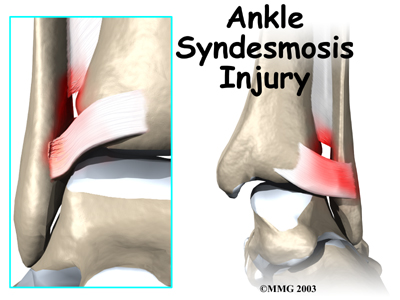
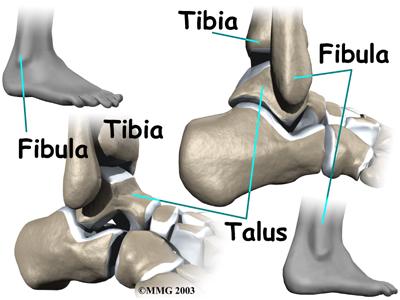

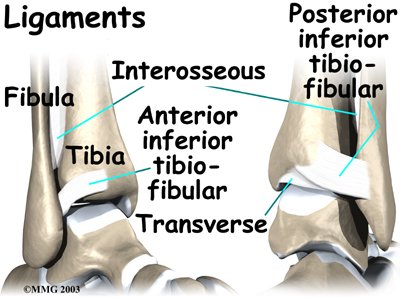 The ankle syndesmosis is supported and held together by
The ankle syndesmosis is supported and held together by 

